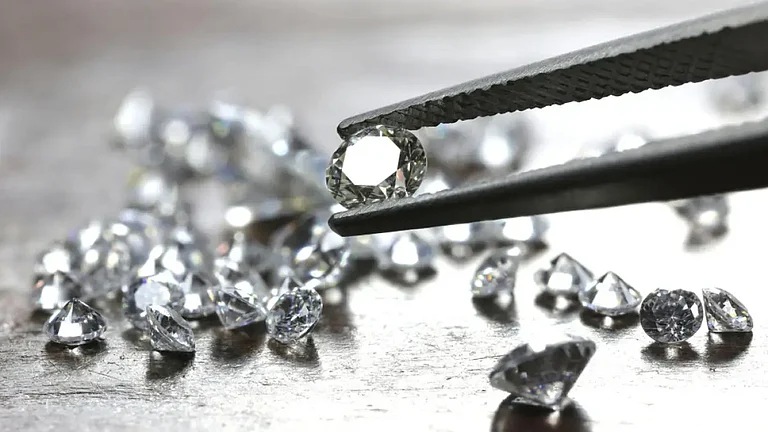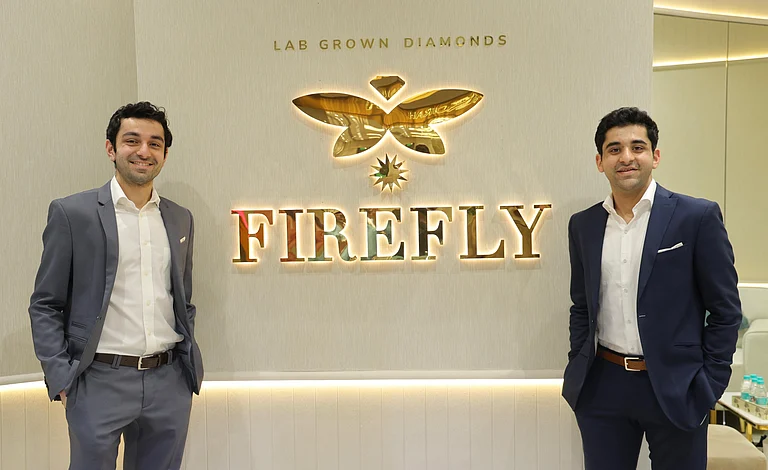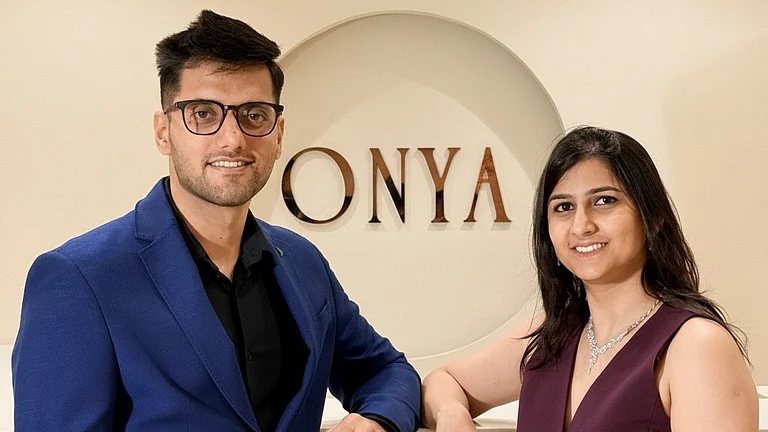Lab-grown diamonds are rewriting the script for Indian consumers who are now choosing sparkle over resale value. As per a annual wedding industry report, nearly 45% of Indian brides chose lab-grown diamonds for rings in late 2024. These diamonds are 30-40% cheaper than their mined counterparts.
Not only consumers, the man-made diamond has also attracted entrepreneurs and venture capitalists to grab the opportunity as the market is expected to grow from $26.05 billion 2024 to nearly $98 billion by 2034. With nearly 37 start-ups operational in this space, VCs have been extensively pouring money into LGD start-ups.
The latest example is Aukera, which raised $15 billion in funding from Peak XV Partners and other investors. Prior to Aukera, Firefly Diamonds also secured $3 million from WestBridge Capital, and Giva bagged ₹530 crore in a Series C funding round led by growth-stage investment firm Creagis.
In total, start-ups working in this space have attracted approximately $14 million in funding in 2025 so far - over 50% year-on-year increase compared to the entire 2024, according to Redseer data.
While each of these investments is backed by solid market tailwinds, the pace and scale of funding suggest a deeper trend at play: the fear of missing out. Let’s dig into market signals to know whether India’s lab –grown diamond boom is built on durable consumer demand or inflated by investor FOMO and trend-chasing.
Beyond the Buzz
“There’s FOMO in the market, but underneath that, the fundamentals are solid,” said Dr. Apoorva Ranjan Sharma, cofounder and managing director of Venture Catalysts.
However, he also believes that there’s real value in the market, not just hot air. “What’s even more exciting to see is that younger consumers actually want these diamonds. They care about sustainability, they want to avoid the ethical issues with mined diamonds, and they love getting big savings,” he told Outlook Business.
He expects that 70-75% of future market is millennials and Gen Z, who are driving this demand for lab-grown diamonds. And that’s a real shift, said Sharma, adding that India is perfectly positioned here. Redseer, a strategy consultancy and advisory firm, said that India is the largest LGD exporter in the world, accounting for 28.6% of global lab-grown diamond exports in 2023.
Not only an exporter, India is also the second largest in terms of rough LGD manufacturing in the world. After China, India has produced 35% of the world’s LGDs in CY 2023, the report said.
Despite the market surge, Aukera founder Lisa Mukhedar cautioned against chasing growth without a clear brand identity or long-term purpose. “Now is a time for reflection, not rush. As the market matures and segments become more defined, only differentiated and purpose-led brands will sustain momentum,” she said.
The industry, in a nutshell, offer genuine and enduring value, Mukhedar noted.
Cracking the Code
Lab-grown diamonds has expanded the use cases of studded jewellery in India. It can go beyond ring and enter the gifting segment costs around Rs 10-30k, daily wear jewellery, and drive a shift from plain gold to studded, said Ashish Kakwani, Partner at EY-Parthenon’s Consumer Products and Retail Sector.
If brands and retailers are able to unlock any of these use cases, the demand for lab-grown diamonds could be sustainable, he added.
What strengthens this opportunity is India’s existing advantage in diamond industry. The country is already responsible for cutting and polishing over 90% of the world’s diamonds due to its robust infrastructure for backwards integration into LGD manufacturing.
Moreover, India’s skilled labour cost enables mass production at lower price points than most countries, making the country a hub for both luxury and mass-market. The government has also created a supportive policy environment with incentives, research grants, favourable FDI regulations, and customs duty exemptions.
Currently, HUID (Hallmark Unique Identification) and IGI (International Gemological Institute) certifications are operational in India. These certifications ensure transparency and consumer confidence, both of which are critical for the category’s sustained growth.
The Real Test
Sharma, who has increased the number of lab-grown start-ups in VCats portfolio, has listed the factors important for an LGD business. What separates a flashy start-up from a fundamentally sound one in this space is how well its unit economics stack up from day one.
“Can they make money on each diamond they sell? What are their gross margins? How fast do they turn inventory? - These are the questions a diamond player should ask himself before entering the space, according to the VCats cofounder.
The next in line is customer acquisition cost. In this industry, he believes that CAC is “tricky” because people don’t buy diamonds every month. The purchase journey is longer, and the ticket size is higher. “So, I look at the full customer lifetime value: will they come back for anniversaries, gifts, refer friends? The LTV to CAC ratio should be at least 3:1,” he added.
And the most important part is the start-up’s manufacturing and tech capabilities. “Can they scale production efficiently? Do they have proprietary processes or just buy diamonds and reselling them? The companies that will win have real operational advantages, not just good marketing,” the VC said.
But even with robust back-end system, Aukera CEO said there is a real risk of commoditisation – particularly from players prioritising low prices over quality, service or authenticity because this could erode customer trust in the category over time.
The Bubble Beneath the Bling
The rise in LGD start-ups has drawn inevitable comparisons to previous start-up frenzies like D2C and EV waves. Unlike D2C brands, which often launched with little more than a website and social media marketing, LGD businesses demand much more than these requirements. Many top investors like India Quotient, V3 Ventures, Peak XV Partners are entering the space.
However, experts suggested remaining cautious because cracks emerge at some point in every hot sector. For instance, the funding in D2C sector sropped 57% from 2019 to 2024 when the bubble burst.
“We saw with other hot sectors - valuations growing faster than the actual business metrics. When big players like Tata and Senco Gold jump in, and there's a funding round every few weeks, prices get inflated. Some companies raise money at valuations that assume they'll become massive businesses, but their current revenue and growth don't support those numbers yet,” said Sharma.
The smart money should look for real tech advantages. Start-ups attracting the higher investor interest usually have proprietary production methods, better CVD or HPHT processes, or innovative supply chain solutions. Surprisingly, some start-ups are just buying diamonds from manufacturers and focusing on branding and marketing. Industry experts said that the model can work short-term, it's not defensible long-term.
The LGD is still at its nascent stage, hence, it would be interesting to see whether LGDs prove to be a rare gem in the Indian start-up landscape or it will be just another shining example of FOMO-driven overreach.



































